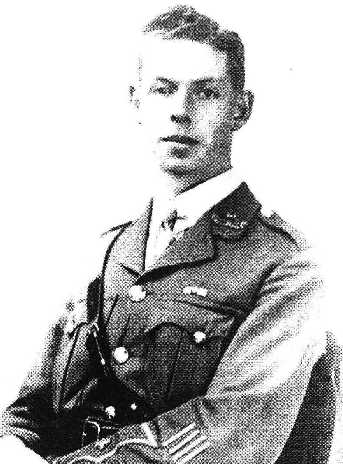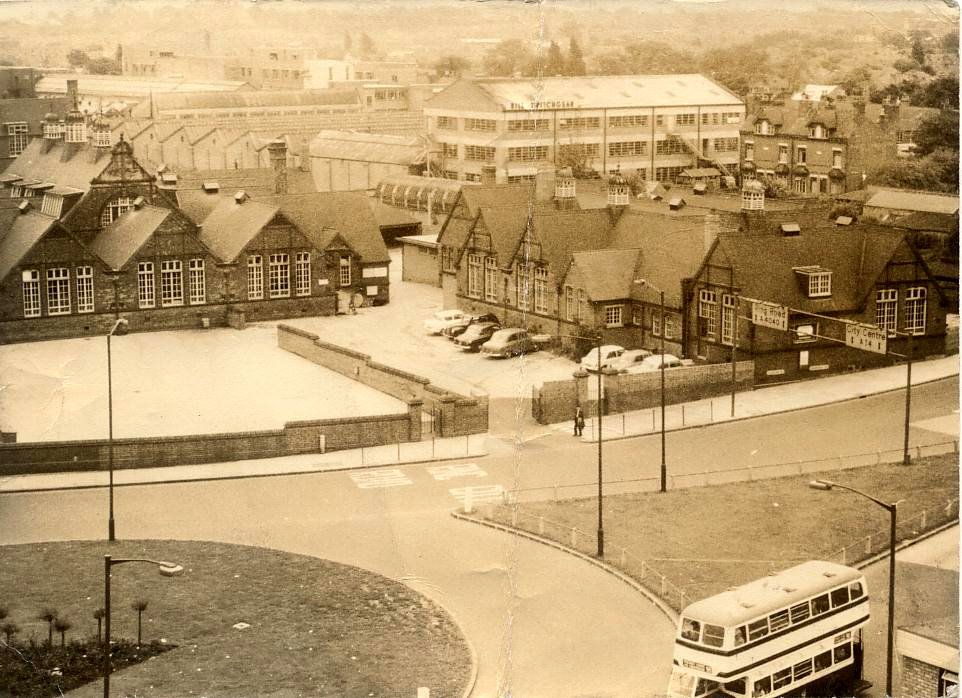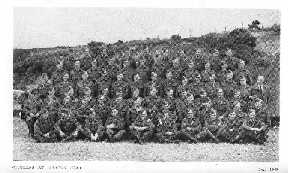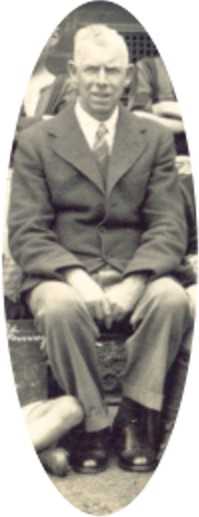|
 Thomas Chapman
was a much decorated soldier in the Great War, receiving first
the Military Cross and then later a Bar to that award. He
served as a Second-Lieutenant with the Royal Warwickshire
Regiment. His Great War decorations
were announced as follows: Thomas Chapman
was a much decorated soldier in the Great War, receiving first
the Military Cross and then later a Bar to that award. He
served as a Second-Lieutenant with the Royal Warwickshire
Regiment. His Great War decorations
were announced as follows:
Military Cross
- gazetted 17th September 1917 and citation dated 5th
July 1918 quoted below:
2nd Lt. Thomas Chapman, R. War. R.
For conspicuous gallantry and devotion to duty. He carried
out several difficult reconnaissances with great contempt
of danger under heavy shell fire. Though twice wounded,
he remained at duty until the battalion was relieved.
Bar to
the M.C. - 16th September 1918
2nd Lt. Thomas Chapman, M.C., R. War.
R.
For conspicuous gallantry and devotion to duty during a
retirement in repeatedly organising parties of men, leading
them forward, and establishing a firing line under heavy
fire. He was slightly wounded, but remained at duty. His
conduct throughout showed great courage and absolute disregard
of danger.
 After
the Great War Mr. Chapman entered the teaching profession.
His daughter, Mrs. A. of Walsall, describes him as teaching
at Birchfield Road School, Perry Barr, Birmingham (pictured
left, ca. 1965, by courtesy of
John K. Colin and the "perrybarrbeyond"
website). By
the outbreak of World War 2, less than 21 years after that
second citation, there is evidence which indicates his serving
as Headmaster of the nearby Canterbury Road Junior School
(later known as Canterbury Cross). After
the Great War Mr. Chapman entered the teaching profession.
His daughter, Mrs. A. of Walsall, describes him as teaching
at Birchfield Road School, Perry Barr, Birmingham (pictured
left, ca. 1965, by courtesy of
John K. Colin and the "perrybarrbeyond"
website). By
the outbreak of World War 2, less than 21 years after that
second citation, there is evidence which indicates his serving
as Headmaster of the nearby Canterbury Road Junior School
(later known as Canterbury Cross).
In the latter half of 1940 he
and his family were bombed out of their Birmingham home where
they had lived for some eleven years. They moved, with some
difficulty, into what was then the village of Pelsall. Mrs.
A. has written of that experience and the choice of Pelsall
as their refuge was in her opinion associated with both her
parents having their early roots in Brownhills, Clayhanger
and Shelfield. After the move Mr. Chapman continued to work
at the same school while his son, Gordon, was articled to
a firm of quantity surveyors in Birmingham and his daughter
attended Miss Westwood's Commercial College in Lichfield Street,
Walsall. At some stage Mr. Chapman joined the Home Guard but
whether this was initially in Perry Barr or later, following
his move to Pelsall, is unknown. He does not appear to have
been serving with the 32nd Battalion, or at least not as an
officer, in February 1941 and was perhaps fully occupied at
that time with the aftermath of his house's destruction.
Mrs. A. comments on her father's
Home Guard service are as follows:
I have no idea who nominated my father
for his post of Commanding Officer in the Home Guard in
Pelsall, but I suspect that it was more to do with him being
a teacher.
I recall that the men met at the `Sycamores'
on Church Road, Pelsall. In the first instance armbands
were worn with ordinary clothes with LD Vol (Local Defence
Volunteers). Uniforms, when issued were ordinary regular
army battle dress, rather prickly and most unpopular.
As far as I remember the only difference
for the officers were the "pips" on their shoulders,
2/Lieut, Lieut., etc.
I think anyone could become a member of the Home Guard,
but when the drilling etc. started faint hearts dropped
out, after all they did a full day's work, some very physically
hard, before going on duty sometimes all night.
I really can't remember many incidents
to do with the Home Guard apart from a rather unfortunate
incident when Albert
Snape was badly injured on one of the manoeuvres.
With regards to the photographs, the first one is of all
the officers of
 the
Brigade, I would imagine (click on
thumbnail image, left,
to expand). Note the ages and medal ribbons
on a number of them. Presumably these
would be World War One decorations. At this time my father
would have been a captain. I have a wallet which was presented
to him bearing information about his position, although
unfortunately it has no dates. The officers on this photograph
came from Aldridge, Rushall and Pelsall. Based on the photograph,
it is impossible to tell where the photograph was taken.
If you look closely at this photograph you will notice the
man at the centre has a dog on his lap. This man was the
colonel. the
Brigade, I would imagine (click on
thumbnail image, left,
to expand). Note the ages and medal ribbons
on a number of them. Presumably these
would be World War One decorations. At this time my father
would have been a captain. I have a wallet which was presented
to him bearing information about his position, although
unfortunately it has no dates. The officers on this photograph
came from Aldridge, Rushall and Pelsall. Based on the photograph,
it is impossible to tell where the photograph was taken.
If you look closely at this photograph you will notice the
man at the centre has a dog on his lap. This man was the
colonel.
Mrs. A. could not remember
the colonel's name, although she did recall that he took his
dog everywhere with him, and so would probably be quite a
memorable character. In fact he was Lt. Col. Charles Cartwright,
M.C., Commanding Officer of the 32nd (Aldridge) Battalion
who appears frequently within this website. The photograph
to which she refers appears elsewhere
within this site. It shows all the Battalion officers in July
1943, most probably at Beacon Camp. The reason for this large
gathering is so far unknown.
Mrs. A. also commented on
a second photograph in her possession which by good fortune
has also come to light
already and is published here
on this site:
 If you look at the photograph you
will notice that some of the members were quite young, although
they looked so much older in their uniforms.
(click on
thumbnail image
to expand) If you look at the photograph you
will notice that some of the members were quite young, although
they looked so much older in their uniforms.
(click on
thumbnail image
to expand)
The men on this second photograph
were all Pelsall people according to Mrs. A. She recognised
a few but could not remember their names. Again the location
is unknown but the date is likely to be the autumn/winter
of 1941/42. In fact with the help of visitors and contributors
to this site it has been possible to identify a number of
these Pelsall men.
From evidence contained elsewhere
on this site it appears that Capt. Chapman eventually commanded
"G" Coy. of the Battalion based on Rushall; and
not "D" Coy. of Pelsall whose C.O. was Capt. (later
Major) W.G. Davies. On the other hand, both he and his son,
Gordon, were at one stage members of "D" Coy. and
appear in the picture showing members of that Company which
is to be seen elsewhere within this website (see
thumbnail above).

After hanging up a
military uniform for the last time, Capt. Chapman spent the
rest of his working life in the teaching profession, still
at Canterbury Road School (later known as Canterbury Cross
School) where he stayed until retirement in 1958 or 1959.
He will therefore be well known to a number of middle-aged
visitors to this site. One of his former pupils recalls the
day of his retirement when he was presented with, amongst
other items, a stylish, wing-backed chair. Another of his
pupils from Canterbury Road School remembers from the 1940s
"what a lovely man he was, the ideal head of a junior
school". How could any teacher ask for a better epitaph?
Capt. Chapman's decorations
and other memorabilia were eventually donated to the Royal
Warwickshire Regiment Museum in Warwick.
Sources of information
to whom grateful acknowledgement is made : The London Gazette,
the "Pelsall Times" Issue 28 dated February 2004;
John K. Colin; D.M. and his Canterbury
Cross School website (Enter site, then follow "Links
to your Primary Schools"); and contributors to the birminghamhistory
forum: D.P. of Cambridgeshire and C. of Worcestershire.
It appears that the Pelsall
Times is no longer published. Efforts by the Webmaster to
contact the magazine, in order to obtain its blessing for
the use of this material, have proved unsuccessful. Full acknowledgement
and apology is hereby extended both to the Pelsall Times and
to Mrs. A. for our having quoted so extensively from their
work without formal permission. In the circumstances we hope
that they find this method of commemorating a brave and dedicated
man to be appropriate and acceptable; and will regard it as
a useful extension of their own commendable effort to bring
his life and work to the notice of a wider public.
|